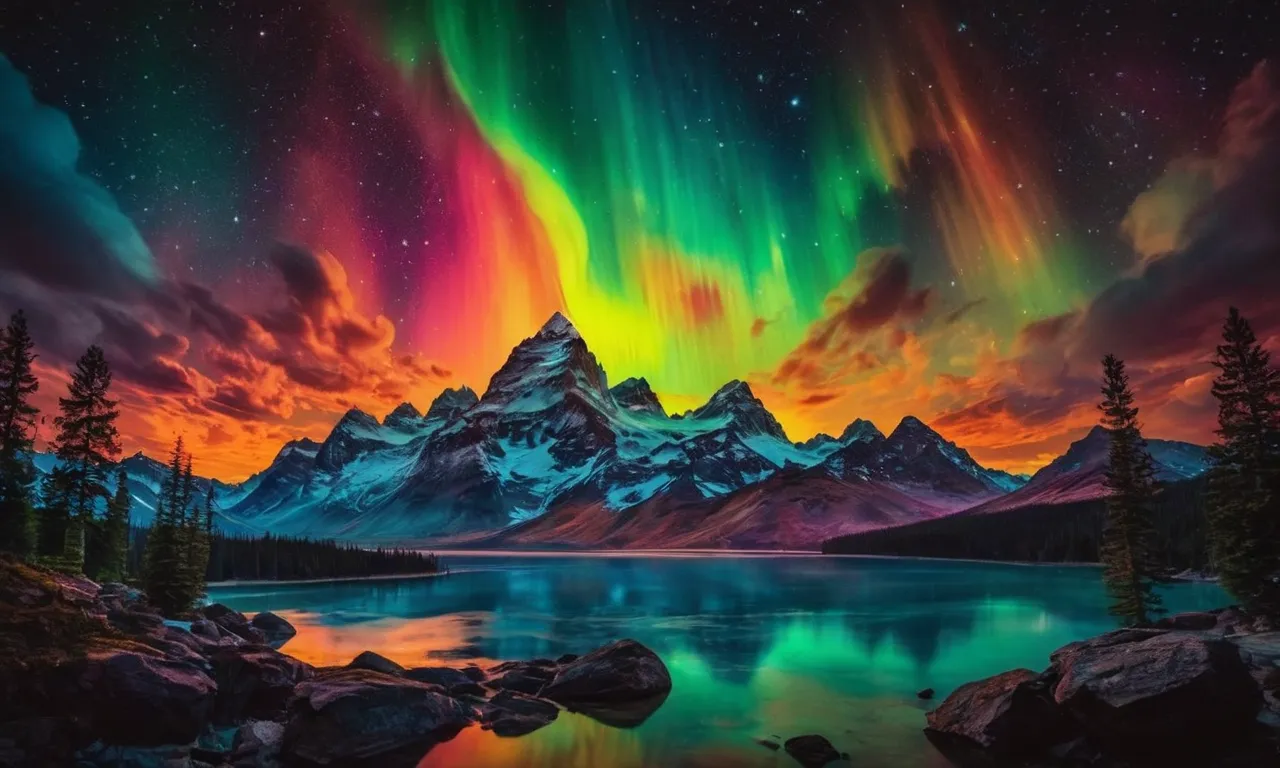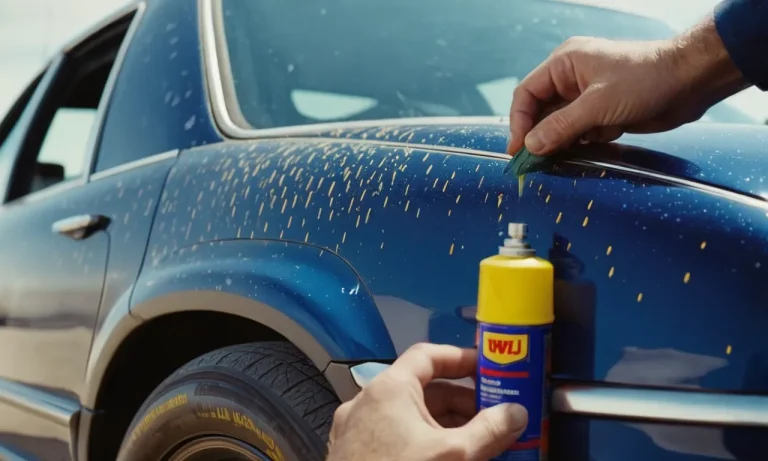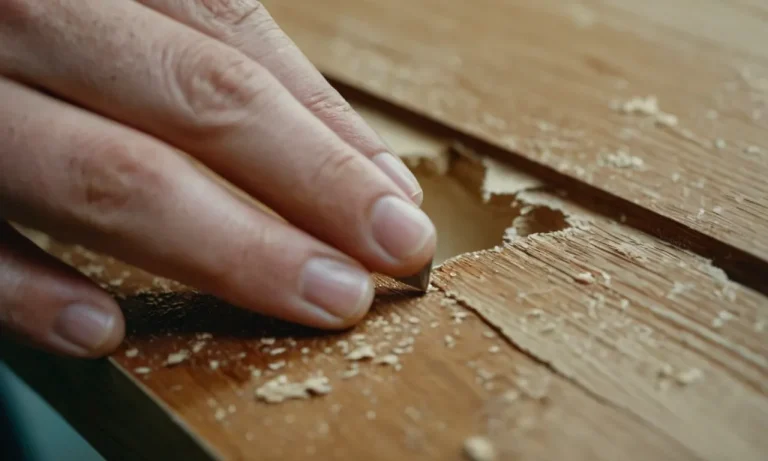How Does Glow In The Dark Paint Work? The Science Behind Those Magical Colors
Have you ever marveled at the eerie glow of glow-in-the-dark paint on walls or Halloween decorations? If you’re curious about how these paints seem to magically produce light, you’re not alone. Understanding the science behind glow-in-the-dark paint can help demystify this curious phenomenon.
If you’re short on time, here’s a quick answer to your question: Glow-in-the-dark paint contains phosphorescent chemicals that absorb and store energy when exposed to light. These chemicals later release the energy slowly in the form of visible light, creating a prolonged glow in the dark.
In this comprehensive guide, we’ll explore the history, chemistry, and applications of glow-in-the-dark paint. Read on to uncover the science of luminescence that empowers these paints to shine even after the lights go out.
A Brief History of Glow-in-the-Dark Paint
Glow-in-the-dark paint has captivated people’s imaginations for decades, creating an otherworldly, enchanting effect. But how did this magical paint come into existence? Let’s take a journey through its fascinating history.
Early phosphorescent paint discoveries
The story of glow-in-the-dark paint begins in the 17th century, when European alchemists stumbled upon an intriguing substance known as phosphorus. They quickly realized that when exposed to light, phosphorus had the ability to emit a soft glow in the darkness.
This discovery laid the groundwork for the development of phosphorescent materials, which would eventually be used to create glow-in-the-dark paint.
However, it wasn’t until the early 20th century that the first practical application of phosphorescent paint was developed. In 1908, a British inventor named S.W. Hutchings created a paint mixture using zinc sulfide and radium bromide.
This paint, known as “Undark,” was primarily used to coat watch dials, making them visible in low light conditions. It was a groundbreaking innovation that would soon find its way into various commercial applications.
Widespread commercial applications in the 20th century
As the demand for glow-in-the-dark products grew, manufacturers began to explore new possibilities for this unique paint. In the 1920s, American companies like the Radium Luminous Material Corporation and the United States Radium Corporation started producing glow-in-the-dark paint on a larger scale.
These paints were used not only for watch dials, but also for aircraft instrument panels, military equipment, and even novelty items.
One of the most significant developments in the history of glow-in-the-dark paint came during World War II. The military relied heavily on phosphorescent materials to create luminous markers and signs that could guide soldiers in low-light conditions.
The use of glow-in-the-dark paint became an integral part of military operations, further driving its popularity and commercialization.
Over the years, advancements in technology and the understanding of luminescent materials have led to the creation of more efficient and long-lasting glow-in-the-dark paints. Today, these paints are used in a wide range of applications, including safety signs, outdoor decorations, and even artwork.
It’s fascinating to see how a chance discovery by alchemists centuries ago has evolved into a widely-used product that adds a touch of magic to our everyday lives. So, the next time you marvel at the glowing stars on your bedroom ceiling or the luminescent pathway in a dark amusement park, remember the rich history behind glow-in-the-dark paint.
What Chemicals Make Glow Paints Glow?
Glow in the dark paint is a fascinating product that has captured the imagination of people for years. Whether it’s used to create glowing stars on a child’s bedroom ceiling or intricate designs on a canvas, glow paint adds an element of enchantment to any project.
But have you ever wondered how this magical paint actually works? It all comes down to the chemicals used to create the glowing effect.
How phosphorescence works
Phosphorescence is the phenomenon that allows glow in the dark paint to emit light after being exposed to a source of light. It is a process that involves the absorption and re-emission of light energy.
When certain chemicals, known as phosphors, are exposed to light, their electrons become excited and move to higher energy levels. When the light source is removed, these electrons slowly return to their original energy levels, releasing the stored energy in the form of visible light.
This delayed emission of light is what gives glow in the dark paint its characteristic glow. The length of time the paint continues to emit light depends on various factors, including the type and concentration of phosphors used.
Common phosphorescent chemicals used in glow paints
There are several phosphorescent chemicals commonly used in glow in the dark paints. One of the most widely used is strontium aluminate, which is known for its long-lasting and intense glow. Another popular phosphor is zinc sulfide, which is often combined with copper to produce a green glow.
Other phosphors like europium-doped strontium aluminate and copper-doped zinc sulfide are also used to create different colors and intensities of glow.
It’s worth noting that glow in the dark paints can also contain other additives to enhance their properties, such as binders, solvents, and stabilizers. These additional ingredients help improve the paint’s adhesion, drying time, and longevity.
If you’re interested in learning more about the science behind glow in the dark paint and the specific chemicals used, you can find further information on reputable websites such as explainthatstuff.com or popsci.com.
How Is Glow in the Dark Paint Made?
Glow in the dark paint is made using a combination of special ingredients that allow it to emit light after being charged. The process involves carefully selecting the right phosphor, mixing it with a paint medium, and ensuring the paint can be charged up with light.
Let’s take a closer look at each step:
Choosing the right phosphor
The key component of glow in the dark paint is the phosphor. Phosphors are substances that absorb energy from various light sources and then slowly release it in the form of visible light. Different phosphors can produce different colors of light, ranging from green and blue to yellow and orange.
The selection of the phosphor depends on the desired color and brightness of the glow. Some commonly used phosphors include zinc sulfide and strontium aluminate.
Mixing the paint medium
Once the phosphor is chosen, it needs to be mixed with a paint medium to create the glow in the dark paint. The paint medium acts as a binder that holds the phosphor particles together and allows them to adhere to various surfaces.
Acrylic, water-based, and oil-based mediums are commonly used for this purpose. The choice of the paint medium depends on the intended use of the glow in the dark paint and the type of surface it will be applied to.
Charging up the paint with light
To activate the glow in the dark effect, the paint needs to be charged up with light. This can be done by exposing the paint to natural or artificial light sources, such as sunlight or a fluorescent lamp.
When the phosphor particles in the paint absorb this light energy, they become excited and store it within their structure. Once the light source is removed, the phosphor slowly releases this stored energy in the form of a gentle glow.
The duration and intensity of the glow depend on the quality of the phosphor and the amount of light it was exposed to.
It’s important to note that glow in the dark paint requires periodic recharging to maintain its glow. The more intense and longer the paint is exposed to light, the brighter and longer-lasting the glow will be.
So, make sure to give your glow in the dark paint a good charge before expecting it to shine brightly in the dark!
Types of Glow in the Dark Paint
Zinc sulfide paints
One of the earliest types of glow in the dark paint is made using zinc sulfide. This compound absorbs and stores energy from ambient light and releases it as visible light when the surroundings become dark. Zinc sulfide paints are known for their ability to emit a greenish glow.
However, their glow may not last as long as other types of glow in the dark paints, and they may require frequent recharging.
Strontium aluminate paints
Strontium aluminate paints are a newer and more advanced type of glow in the dark paint. They contain phosphors made from strontium aluminate crystals, which have a higher light-storing capacity than zinc sulfide. As a result, these paints can emit a brighter and longer-lasting glow.
Strontium aluminate paints are known for their ability to glow in various colors, including green, blue, and even red. They are often used in safety applications and decorative purposes.
Dual phosphor paints
Dual phosphor paints combine the best qualities of zinc sulfide and strontium aluminate paints. These paints contain a mixture of both phosphors, allowing them to produce a strong initial glow from the zinc sulfide and a sustained glow from the strontium aluminate.
This combination results in a glow in the dark paint that is both bright and long-lasting. Dual phosphor paints are often used in high-end applications where a strong and durable glow is required.
It is important to note that the performance and longevity of glow in the dark paints can vary depending on various factors such as the quality of the paint, the amount of phosphor used, and the charging method.
To ensure the best results, it is recommended to follow the instructions provided by the manufacturer and use high-quality glow in the dark paints.
For more information on glow in the dark paint and its various types, you can visit www.glowinthedarkpaint.com where you can find detailed guides and product recommendations.
Fun, Creative Uses of Glow in the Dark Paint
Arts and Crafts
Glow in the dark paint can add an extra element of excitement and creativity to your arts and crafts projects. Whether you’re painting a canvas, decorating pottery, or even designing custom t-shirts, glow in the dark paint can bring your creations to life.
Imagine the delight on your child’s face when they see their artwork glowing in the dark! It’s also a great way to add a unique touch to Halloween decorations or themed parties. You can even use stencils or tape to create intricate designs that will glow when the lights go out.
Home Decor
Adding glow in the dark paint to your home decor can create a magical and whimsical atmosphere. You can paint stars, constellations, or even galaxies on your bedroom ceiling, giving you a stunning view of the night sky every night.
It can also be used to highlight certain areas of your home, such as staircases or doorways, making them easier to navigate in the dark. Another fun idea is to paint glow in the dark rocks and place them in your garden or walkway, creating a beautiful glowing pathway.
Outdoor Applications
Glow in the dark paint is not limited to indoor use only. It can be a fantastic addition to outdoor activities and events. For example, you can paint glow in the dark markers on your favorite frisbee or football, making nighttime games even more exciting.
Camping trips can be enhanced by painting glow in the dark designs on your tent or camping gear, making it easier to find your way around at night. Glow in the dark paint can also be used to create stunning outdoor murals or to add a unique touch to outdoor furniture.
These are just a few of the many fun and creative uses of glow in the dark paint. Let your imagination run wild and explore the endless possibilities that this magical paint can offer!
Conclusion
Glow-in-the-dark paint is a testament to human innovation and the wonders of phosphorescence. While the paint itself seems mystical, its inner workings obey the natural laws of science and chemistry. Understanding the glow mechanism empowers us to harness these paints for creative applications.
The next time you encounter a glowing paint job, take a moment to appreciate the rich history and painstaking chemical engineering behind the magic. With science on your side, you can craft your own glow-in-the-dark masterpieces to light up the night.







